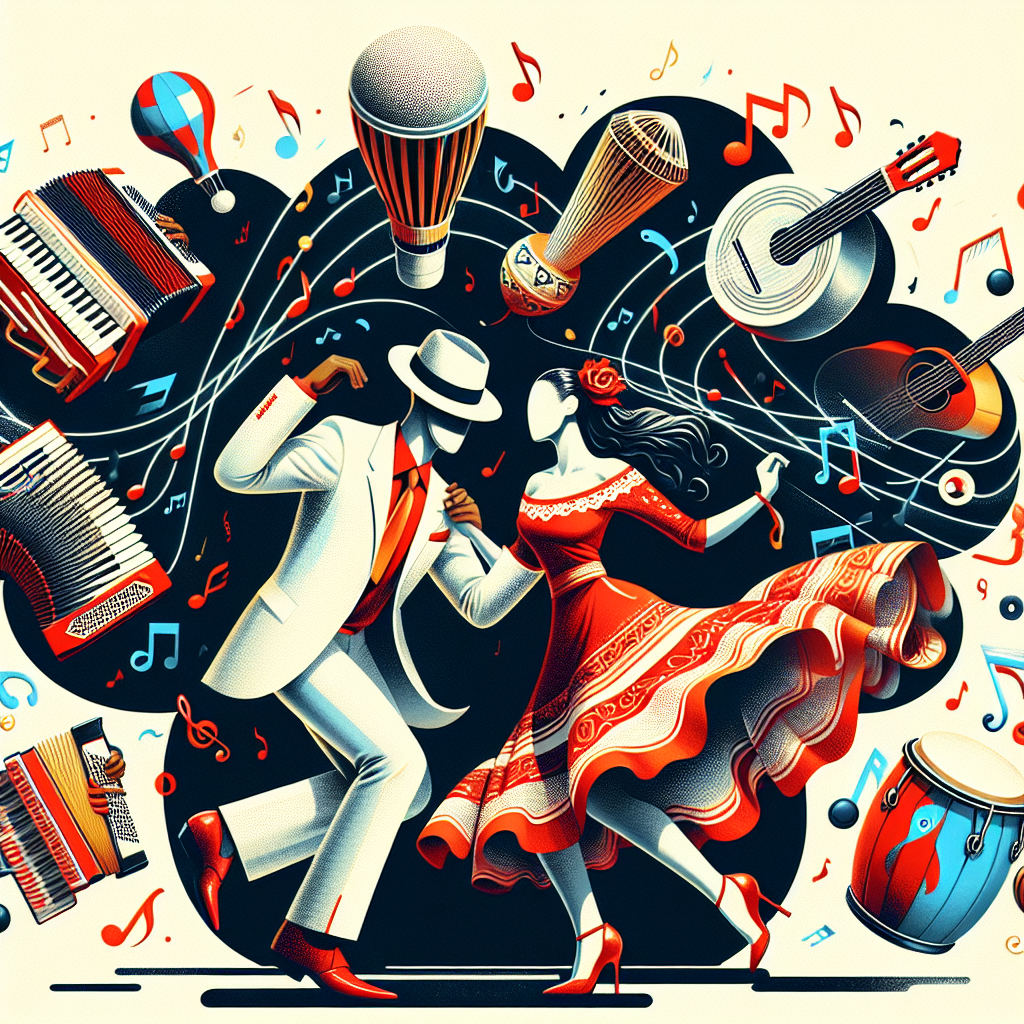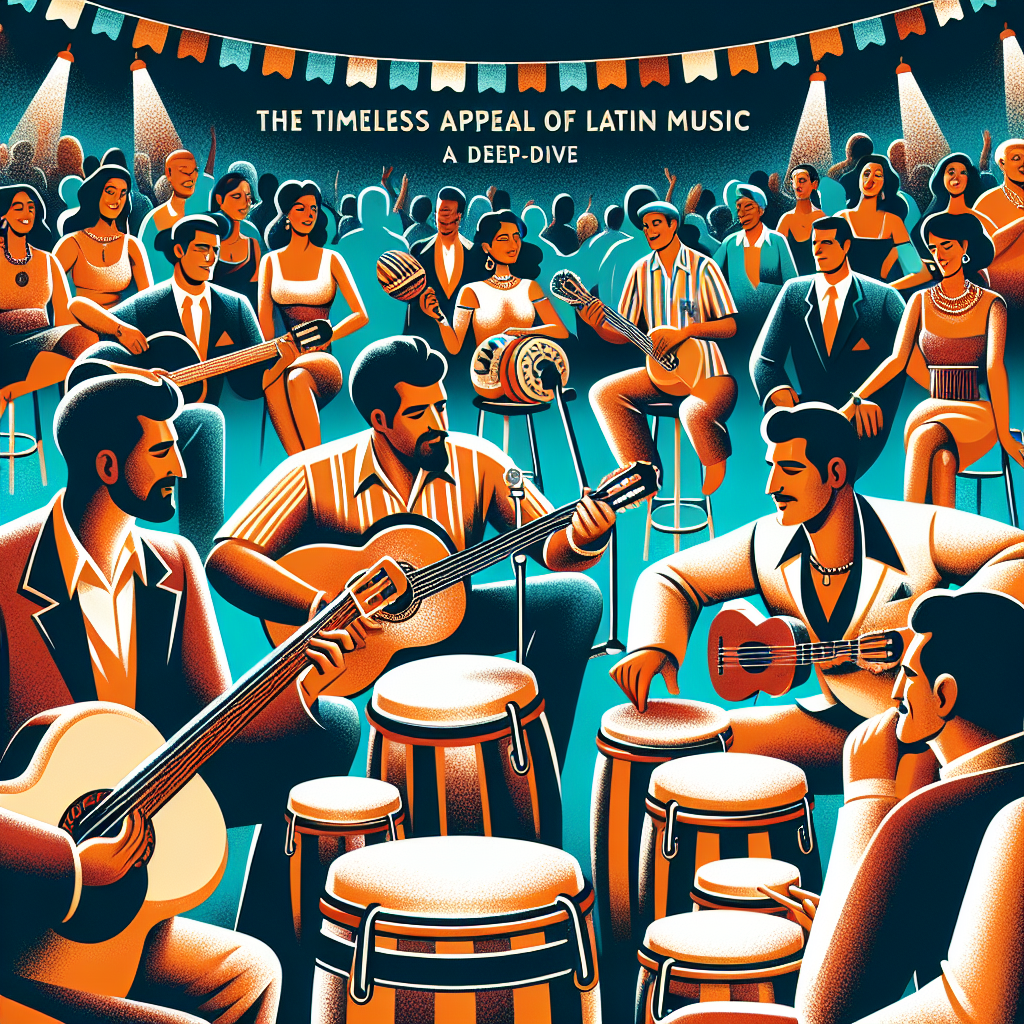Salsa music, characterized by vibrant rhythms and compelling melodies, has been a significant part of Latin American culture for decades. Globally renowned for its high energy, sharp brass sounds, and intricate percussive components, it’s a music genre that is as complex as it is engaging. Here, we are going to delve into detail to understand the roots and evolution of this influential music style.
The roots of salsa music can be traced back to Cuba in the 1900s, drawing influences from a range of varied musical styles. The term ‘salsa’ itself means ‘sauce’ in Spanish, suggesting the blend of various musical elements to create a unique sound.
The Afro-Cuban influence forms the backbone of salsa music. Afro-Cuban styles such as the son, mambo, and cha-cha-chá played pivotal roles in the development of salsa. The son, for instance, offers a basic rhythmic and melodic foundation for salsa. This fusion of Spanish and African elements reflects the broader cultural integration that occurred in Cuba over centuries.
The Rise of Salsa in the United States
In the mid-20th century, salsa made its mark on US soil, especially in New York City, home to a large number of Puerto Rican migrants. The music and dance culture flourished in Spanish Harlem and the South Bronx, leading to the establishment of the New York Salsa style.
The New York sound featured a more aggressive style and was faster-paced, featuring a heavy emphasis on brass and percussion instruments. Iconic labels like Fania Records were instrumental in the popularization of salsa, with artists like Celia Cruz, Willie Colon, and Hector Lavoe becoming ambassadors of the sound.
As salsa continued to evolve, it began to integrate more contemporary influences such as jazz and rock. This resulted in further stylistic variations, such as Salsa Dura (Hard Salsa) and Salsa Romantica (Romantic Salsa).
Salsa Dura, also known as Salsa Gorda, is characterized by its aggressive and improvisational style, relying heavily on percussive elements and complex structures. On the other hand, Salsa Romantica, emerging in the 1980s, features a smoother and more sentimental sound, focusing more on the lyrics and melody.
Moreover, regional variations of salsa also evolved. For instance, the Colombian style emphasizes a strong and steady percussion, whereas the Puerto Rican style often incorporates elements of bomba and plena rhythms.
Today, salsa remains an influential genre, resonating with audiences worldwide. The captivating sounds, along with the dynamic dance movements, have transcended borders, showcasing the vibrancy and diversity of Latin American culture. Having evolved and diversifying over time, and still retaining its fundamental roots, salsa music is quintessentially the embodiment of a cultural melting pot – spiced and seasoned over time.
FAQ
- What are the roots of Salsa music?
The roots of salsa music can be traced back to Cuba in the 1900s. Afro-Cuban styles such as the son, mambo, and cha-cha-chá significantly influenced its development.
- How did Salsa music rise in the United States?
Salsa rose to prominence in the United States, particularly in New York City, due to a large influx of Puerto Rican migrants. The music and dance culture flourished in areas like Spanish Harlem and the South Bronx.
- What are some key stylistic variations in Salsa music?
Some key stylistic variations include Salsa Dura (Hard Salsa) and Salsa Romantica (Romantic Salsa). Salsa Dura is aggressive and improvisational, while Salsa Romantica is smoother and more sentimental.
- How has Salsa music evolved over the years?
Salsa music has evolved by integrating more contemporary influences such as jazz and rock, leading to further stylistic variations. Regional variations have also emerged, influenced by the specific cultural contexts of different Latin American countries.
- Why is Salsa music important?
Salsa music is important because it represents the vibrancy and diversity of Latin American culture. Its captivating sounds and dynamic dance movements have resonated with audiences worldwide, testament to its global influence.




